
When that first seed drops into that shallow groove, the life of a grain farmer — and family — changes from calm to chaos in the blink of an eye.
“There are times when it feels like it’s an amusement park ride. On occasion, I’ll say, ‘Stop this thing. I want to get off,’” says Jan Layman, a 5,000-acre Kenton, Ohio, corn and soybean no-till farmer.
As spring planting looms, much of the corn belt is already behind the weather eight-ball as cold and wet weather continue. And no matter how spring planting starts, it’s bound to feel like a wild ride. So how do you stay timely, organized and efficient, despite weather, illness and equipment breakdowns? We asked readers to share advice on how to make spring planting feel less like a roller coaster and more like a Sunday drive.
Plan for change
“The goal is to have a plan and expect it to change, because that’s farming,” says Oregon, Ill., farmer Dan Luepkes, who grows corn and soybeans with son David. “You have to adapt to everything that the planting season can and will throw at you. It could be weather or equipment, which is why we have some tillage equipment on hand just in case no-till doesn’t seem to work in a given field.
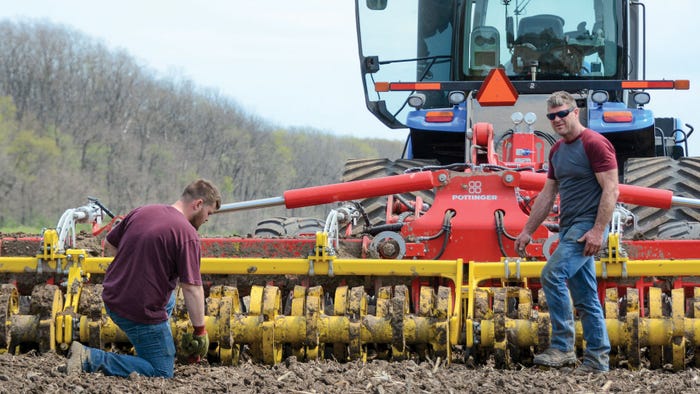
New tech can save time during planting. That was the goal when Illinois farmers David and Dan Luepkes set up this high-speed 33-foot disk. “It was new to us, so it takes a fair amount of time to get the depth set properly,” Dan says. Credit: Mike Wilson
“In farming, how many times does it actually ever go exactly according to plan? Not often,” he adds.
Even so, a plan does offer the best chance at success. Before planting, Layman reviews seed purchases and creates a color-coded variety plan that includes farm ID, number of acres in each field, and hybrid or variety. His wife, Cindy, who manages business operations with daughter Genny, laminates several copies of the plan for each tractor.
Seed beans make a planting plan trickier for Rodney Rulon of Rulon Enterprises, a fourth-generation operation, which includes Ken, Roy, Nick and Neal Rulon. They grow just over 7,000 acres of no-till corn and soybeans (nearly all for seed) near Arcadia, Ind. About nine people help plant the Rulon crops.
“Our planting plan is designed for a perfect weather scenario to make the shortest geographic moves and distances without changing varieties,” Rulon says. “Choices are geographically specific. Once we make the planting plan, we don’t change the variety that goes on that field. The seed company has a say in the acres they give us for each variety, and we tell them which fields we want them on.”
A good start
One tip for success stated repeatedly is to make sure everyone knows what they’re doing, and that the right people are doing the right thing.
“I’ve got good people who I trust,” Layman says.
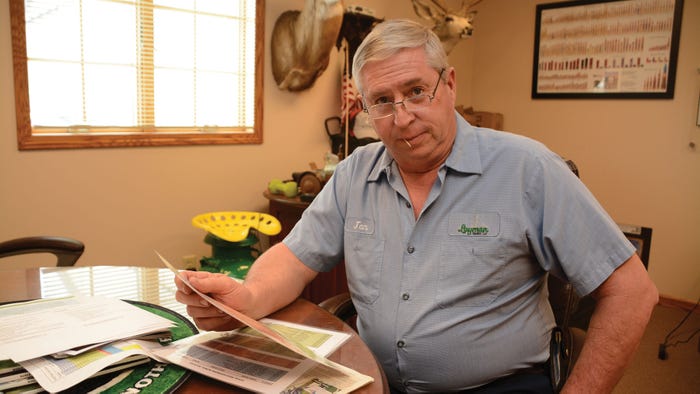
Before planting, Ohio farmer Jan Layman reviews seed purchases and creates a color-coded variety plan, which includes farm ID, number of acres in each field, and hybrid or variety. Credit: Mike Wilson
Once no-till farms are ready, his team hits the fields with two corn planters, two bean planters and two sprayers — “all at once if we can,” he adds. “Sometimes we end up starting to plant beans before we start to plant corn if one farm is fit and another isn’t.
“In the past, our first order of business was to try to get soybean burndown finished and wait seven days, but with Enlist beans, there’s no waiting. That’s a big, big deal.”
On the other hand, impatience can backfire on you, Rulon notes.
“The biggest challenge we have in spring is throttling ourselves back,” he says. “People get in a big hurry and get out there when it’s too wet. It’s not always best to plant early if the conditions aren’t right.”
Minimize downtime
The Laymans buy corn in 50-unit pro boxes and try to make fields fit to the seed in each box, so they’re not running out at awkward times. Along with six drivers for the planters and sprayer, the Laymans have part- and full-time employees. One drives a semi with a water tank so chemicals can be mixed in the field. Liquid fertilizer is applied 2 by 2 by 2 at planting.
“The planter guy takes the planter to the field, and we get him a ride to come take the nurse trailer with liquid fertilizer so he’s got everything he needs for the day,” Layman says. “The nurse trailers are a big timesaver, so we’re not running back to the farm with a 1,000-gallon wagon to get more liquid fertilizer.”
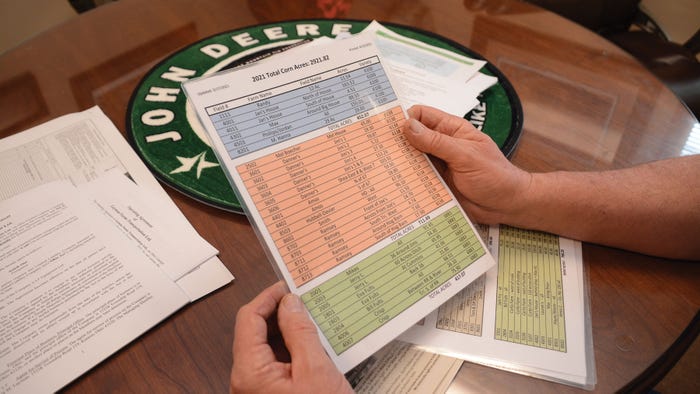
A laminated copy of Layman Farm's seed plan goes in every tractor. Credit: Mike Wilson
In addition, Layman has a vast inventory of parts, as his nearest Deere dealer is over 30 miles away.
There’s also no waiting for a local dealer to apply products. Ten years ago, the Laymans decided they could do a cheaper, timelier job of applying fertilizer and lime, so they shifted from sole proprietorship and added a limited liability company for daughter Genny and son-in-law Matt. They now manage spreading the applications for the farm.
Executing the plan
During planting season, “farmers have little time to think about what must be done,” says Kenton, Ohio, farmer Brian Watkins. “You’re just going full bore.”
Watkins farms with his brother, nephew and seven full-time employees. He is founder of equipment management software Cropzilla and uses it for work planning.
“Typically, work orders are how you manage people, but we didn’t feel it fit us,” he says. “But we do have an overall plan, where we have in writing and on an app on the phone what’s going to be planted in every field, herbicide and the fertilizer program. It’s in every vehicle and in everybody’s phone, so everyone knows. We have pretty clear lines of responsibility.
“We’re not saying, ‘You go here, and when you’re done, we’ll tell you what to do next.’ We’re saying here’s the big picture, everyone has their area of responsibility and hierarchy, and this has worked well for us,” he says. “That’s how you keep people moving.”
Rulon executes the farm’s planting plan through cloud-based software. Five years ago, his farm’s Ag Leader monitors were tied into one digital platform called AgFiniti, which automatically maps, stores prescriptions, reports and analyzes information on the go.
“Everybody has a copy of the spreadsheet, with a list of fields by variety and the order we expect to plant them,” Rulon says. “With AgFiniti, any of us can pull up a field on our phone and see if it’s been finished, because as we plant or spray, the information goes into the cloud. It keeps records on seed production, billing, crop share, yields, landlords — it’s all automatic. So when we get that rainy day and someone wants a report on where we’re at in planting or spraying, I can tell them within five minutes.”
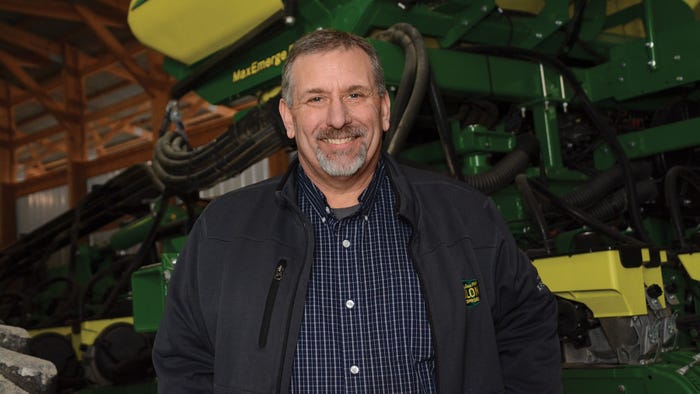
“One of the best time management tricks is to have tiled fields, because it means you have twice as big a window to plant compared to untiled,” says Indiana farmer Rodney Rulon. Credit: Mike Wilson
Keeping everyone informed
High-speed equipment and sensor technology keep planters humming. However, it also takes human skills, such as delegating, multitasking and communicating clearly — not just with your farm team but also your family.
“We put a lot of focus on using shared calendars, our org chart and communication chain,” says Kasey Bamberger, a farm partner at Bryant Agricultural Enterprise, Washington Court House, Ohio.
The Bryant farm has 33 full-time employees and eight family owner-partners, along with semi-retired grandparents. The farm is adding cover crops, and reduced or no-till planting on several thousand acres. There’s a tremendous workload each spring, but with 90-foot high-speed planters, Bryant can cover upward of 1,700 acres a day.
“We try our best to make sure that our lines of communication are being followed in order to be effective and efficient. We have weekly management meetings so that we are able to understand what is going on in other departments and to be able to exchange information to try to be more efficient with time,” she says.
Tech communications
How people communicate has changed drastically in the past several decades. Some communicate via group text messages; others rely on more sophisticated farm software such as Granular or Conservis. The good-old two-way radio is still a go-to for many operations.
“If you have a private thing you don’t want the whole crew to hear, you send a text, but we rely mainly on two-way radios,” Layman says. “The bad thing with text is I’m old enough now I need to put on my readers to see them. I have my print as big as possible on the phone, but it’s still an issue. I can do something quick on the radio, and I don’t have to hunt for a phone number.”
Having people back in the farm office coordinating field movement also helps. Experienced hands don’t need much direction, but newer employees may need to be outfitted with maps or other geo-references.
Rulon uses texts to communicate where planters or sprayers should be. “In the first couple days, I’ll be doing some planter and variable-rate setup, and making sure maps and automatic shutoffs work right at the beginning. We put qualified people in there to do the job, so I have to trust the guys to let me know if there’s a problem.”
People power
Having the right people doing the right things is key — not just for planting, but all year, Watkins says. “If the right person is doing the right thing, it just goes smoother.”
Job perks also help.
“During long days, we’ll feed people both lunch and dinner,” Layman says. “We pay them well, and they will all get a cash bonus at the end of the year, as a rule. Workers get a stipend to use for insurance, and we just started a simple IRA that includes a match up to 3%.”
Further, Layman’s employees get time and a half over 40 hours per week. They also get paid if they go on vacation or to a doctor visit.
You want employees to feel like their work matters to the business, but the fact is they have another life. They may need time off even during spring planting.
Experienced players don’t need much hand holding at planting, but younger workers might find standard operating procedures helpful. If you haven’t lately, update or write new job descriptions and SOPs for each employee. Remember, as the farm grows and new people come on board, these SOPs evolve as well.
“We are trying to incorporate SOPs for pretty much everything we do, from planting to loading a trailer to preparing equipment to be put up for the winter,” Bamberger says.
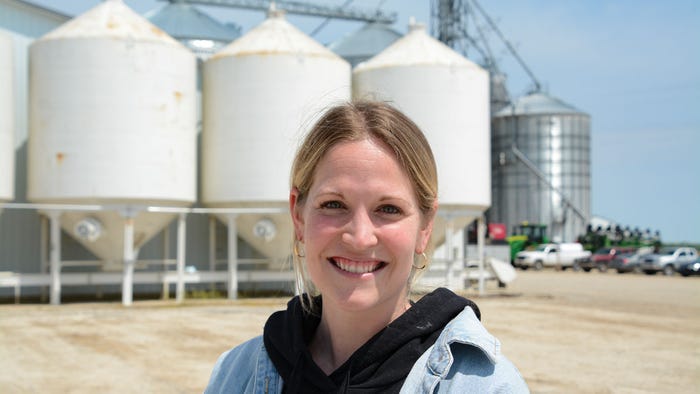
“We put a lot of focus on using shared calendars, our org chart and communication chain,” says Kasey Bamberger, a partner at Bryant Agricultural Enterprise in Ohio. Credit: Mike Wilson
Managing delays
Weather delays cause stress, but those rainouts can serve as needed refreshment for both humans and equipment. Longer stretches of severe weather can be an opportunity for needed time off with the family. If your operation spreads out geographically, you may be able to work fields elsewhere.
“When weather hits, everyone disappears for at least half a day, and that’s OK,” Watkins says. “Everybody needs that.”
It’s an opportunity to catch up on other tasks, too. Each tractor driver at Rulon’s farm keeps a marker in his or her cab, and lists out things that need attention.
“I keep a dry-erase marker in my cab, and I write notes right on the window,” he says. “If it’s been a long stretch and we all collapse, we’ll go back and do maintenance. [Cousin] Ken will go back to the office and catch up on marketing and bills, or we may need to haul seed beans. If the rain delay is so long we actually get caught up, we’ll usually get the tile plow out and catch up on those jobs.”
This will be Bamberger’s first spring managing her home, family, job and a newborn, so she expects some juggling between work and motherhood tasks.
“We don’t have it all figured out, but we have been successful communicating with each other, being realistic, and expressing gratitude to each other and our community, which plays a big part in making it through busy seasons,” she says.
About the Author(s)
You May Also Like






